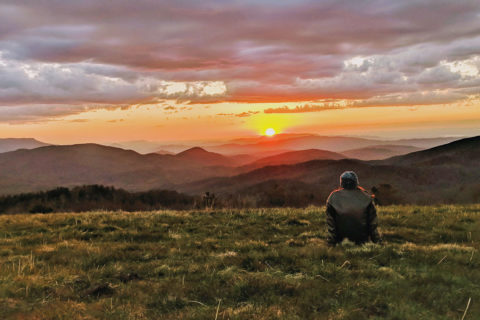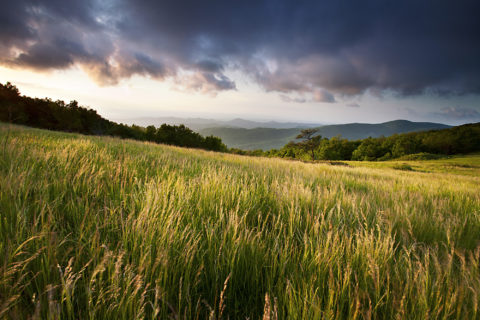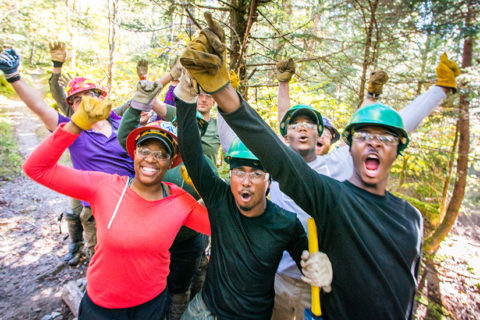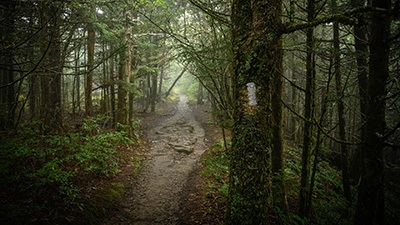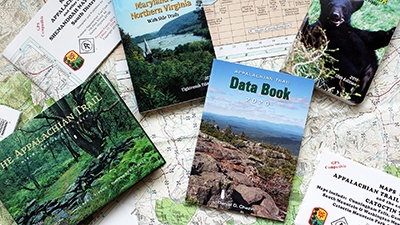By Sandra Marra, President & CEO of the Appalachian Trail Conservancy
Shifting Perspectives and Realities
July 17, 2020
The following is a column written by Appalachian Trail Conservancy President & CEO Sandra Marra for the Summer 2020 issue of A.T. Journeys, our membership magazine. The ATC’s commitment to educating ourselves and orienting our mission and work to justice still stands. This will require both a dedication of time and resources as well as a shift in our perspectives to create an A.T. community that is safer, more accessible, and more inclusive.
June 15, 2020. I feel it is important to place a date on this column as it helps establish the reality of this day, which is different from yesterday, and I am sure will be different from the day you read this in July. In this new reality, the only thing that seems to be absolute is that there will be significant change occurring almost daily.
The theme of this issue centers on the Appalachian Trail experience. We’ve talked about the Trail experience for years, so it is not necessarily a new topic. But the lens by which we look at this theme, and the context in which it needs to be considered, has changed drastically and, perhaps, permanently.
First, we must now look at the Trail experience in the reality of a global pandemic. For the first time ever, the Appalachian Trail Conservancy (ATC) asked people to not hike on the A.T. In mid-March, we asked thru-hikers to leave the Trail if they had already started and we asked all others to postpone their start. This was followed by a plea to all visitors to stay off the Trail. This guidance was based on science and facts and took into consideration both human safety and resource protection. As I write this today, we are just now offering advice on how safe day use can be undertaken. We also are still waiting for approval from the National Park Service to let our volunteers return to the Trail. And we continue to struggle on how to advise long-distance hikers how to safely traverse the length of the Trail considering all the communities and states the A.T. passes through.
Second, heightened attention to events that — while nothing new — are suddenly being viewed through a clearer lens, has brought the conversation of racial and social justice to all aspects of our lives, including how it translates to the A.T. experience.
“Stay in your lane; just talk about hiking; don’t be political.” I am just anticipating some of the reactions to the sentence above based on the reactions I’ve received in the past two weeks since the ATC published “A Commitment to Justice,” our letter to the Trail community about the ATC’s commitment to making justice, equity, diversity, and inclusion the cornerstone of our work. I will be honest: I am somewhat confused by the counterarguments. The very nature of a commitment to social justice means there is an acknowledgment that we can not parse out which areas of society are to be just, and which areas get a pass. Before the murder of George Floyd and the broad-based embrace of the Black Lives Matter movement, the COVID-19 pandemic had already cleared away much of the fog surrounding justice and equity in our country. And I saw it directly impacting the A.T.
During the peak of the lockdown, we heard constant pleas to make the Trail “available” because people needed that outlet and couldn’t possibly sacrifice their outdoor time. Reporters asked me: isn’t closing the Trail closing off the possibility for people in overcrowded cities and perhaps unhealthy or dangerous home environments to have an outlet to escape? The reality is that the vulnerable and those facing a greater chance for exposure and sickness were not the ones clamoring for use of the Trail. And, in fact, they represent a large swath of our society that never gets the chance, in even the best of times, to experience the Appalachian Trail.
The reality is that hiking — particularly recreational day use — requires one to start out from a position of privilege. You have the privilege of having free time that is not taken up with second or third jobs, or unrelenting child or elder care. You have the privilege of personal transportation and affording gas to get yourself to a trailhead. You can afford boots and day packs and have access to technology to bring up information on where to go and how to get there. And, most likely, you have had the privilege of experiencing hiking from a young age, with peers, and that it has been a welcoming and positive experience.
This is not reflective of the reality for much of the American population. As I stated in my letter:
“The A.T. is not racially or ethnically diverse. It is not accessible to people from low-income communities. It is not always a safe place for women. And, it is not relevant to many people we consider to be part of the next generation. We recognize this must change. We recognize we must orient ourselves and the broader Trail community to justice in its many forms — environmental, social, racial, and economic.”
Sitting here today, I wonder what the next few months will bring. I hope that it shows us having moved forward with these discussions — if only by a small increment — and that there is a recognition that the pursuit of justice is very much the responsibility of the ATC and our current ecosystem. The blazes that lead us along our path must also lead us to a more open, welcoming, and equitable Trail community.
From the start, the idea of the Appalachian Trail was both radical and visionary. The idea of the Trail was never just about hiking and was very political. The stand we are taking today absolutely matches our past and is critical for our future. Thank you for joining with us.
Sincerely,
Sandra Marra
President & CEO
Appalachian Trail Conservancy

Header image by Dan Holz @ Osprey Packs
Discover More

Stay Informed
Latest News
Read the latest news and updates about the Appalachian Trail and our work to protect it.

ATC's Official Blog
A.T. Footpath
Learn more about ATC's work and the community of dreamers and doers protecting and celebrating the Appalachian Trail.

Be a Voice for the Trail
Advocacy
Whether on the Appalachian Trail or on Capitol Hill, obstacles arise every day that threaten the Appalachian Trail. We're here to protect it. Learn more about how we stand up for the A.T. and it's surrounding landscape — and how you can help.

